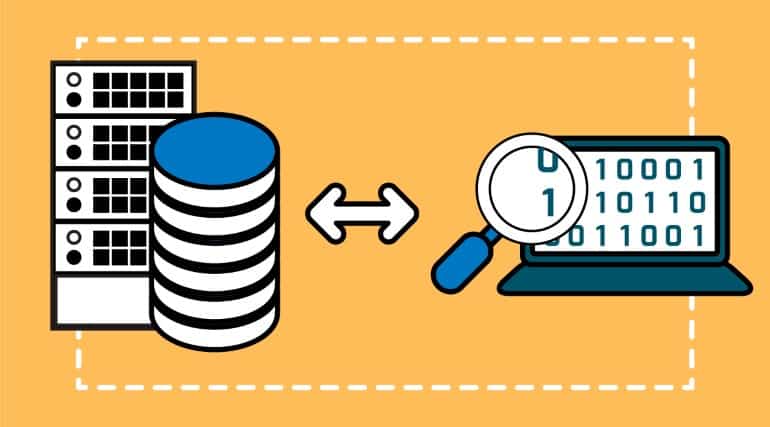
Why Developers Love Server-Side Programming Languages
Web development plays a vital role in the development of the World Wide Web by shaping up the online landscape. Since the dawn of the internet, the world has learned new ways of disseminating information, which has changed the way technology has evolved over the years. The juggernaut that we know today as IT has its roots laid deeply into the fabric of client-server architecture.
Driving this client-server model forward are scripting languages that can be classified as server-side programming languages and client-side programming languages.
Both these languages have their own pros and cons, which make them ideal for use in certain specific situations. Server-side programming languages like PHP are highly coveted and prestigious organizations pay a handsome amount of money to developers who are proficient in this technology. PHP Developers in the United States earn on an average a salary of $62K annually, which is considered quite a decent paycheck for a developer.
Server-Side Programming vs. Client-Side Programming
In server-side programming, dynamic HTML pages are generated by running a script directly on the web server after a request is made by the user. After that, an HTML code is sent directly to the client browser, which can be seen in the form of a web page. It is very much different from client-side scripting, in which scripts are executed by the viewing web browser on the client’s computer. In client-side computing, the whole script is executed on the computer owned by the clients.
It is possible to learn about all the features of both types of programming paradigms via full stack web developer bootcamp. Both the aforementioned programming languages have their own pros and cons. A comparison of server-side programming and client-side programming on the basis of their benefits is provided below:
1. Server-Side Programming Requires Less Resources
There is no need to download plugins like Java or Flash when you are using server-side programming language. When using client-side programming, you are required to download the plugins from the internet.
2. Server-Side Programming helps in the creation of Repeatedly Usable Template Page for the Whole Website
It is possible to create a single website template and then replicate it for the entire website. Every new dynamic page formed using the unique template is created automatically.
3. Faster Load Times with Server-Side Scripting
Load times for a website are always better with server side scripting as the execution of the processes is done on servers with high-end hardware.
4. Possible to perform Partial page updates using Ajax with Client-Side Programming
It is possible to update parts of a page without reloading the entire page. Features like push notification, auto complete and infinite scrolling makes use of client-side scripting.
5. Quick validation of forms inputs and progressive enhancement with Client-Side Programming
Client-side programming comes with basic HTML support for validation of form inputs without client-side scripting and it also allows for enabling or disabling of web page features.
6. Analytics and Tracking
Certain high-end client analytics such as screen resolution and click tracking are possible with client-side scripting.
One of the major disadvantages of server-side scripting is that the scripts can be used by attackers to gain access to the server. Another disadvantage is that refreshing of webpages is required for displaying the dynamic content. On the other hand, the primary disadvantage of client-side programming lies in the inherent difficulty of hiding the programming logic from the user. This is a primary cause of concern and poses a security risk to the intellectual property. When we look at the whole comparison, we can say that both these technologies have their pros and cons, and are chosen by users depending on their scripting preferences and requirements.
Server Side Programming Languages Preferred by Programmers
Python and PHP are high-level programming languages favored by developers. PHP has been traditionally used as a server-side scripting language for a long time and Python has come into the fray because of its dynamics, availability, and simplicity. Over 80% of the modern websites are based on PHP and its constant evolution with time means that it is going to stay in the web development world for a very long time. On the other hand, Python is preferred by many because of its flexible nature. It is safer to use Python for programming. The special packages that are part of the Python suite make the task of loading additional libraries simpler and facilitate the development processor.
When choosing either of the two languages for server-side programming, one should evaluate their features and check if they fit their requirements. Both languages are preferred due to the advantages that they offer to the users. A few common features of these languages that make programmers fall in love with them are listed below:
- When compared to C++ and Perl, PHP and Python are easy to learn
- These two languages come with extensive and detailed documentation
- Both languages are open source and are constantly updated by their respective communities
- Easy to learn and work with PHP and Python because of the friendly community, which offers solution to the problems when you get stuck
- PHP and Python have IDEs for all the major operating systems
The features mentioned above are the main reasons why most programmers would rather work with Python and PHP than choose any other language for the purpose of server-side programming. People who have done their full stack web developer training are well-informed and generally prefer the aforementioned languages.
Start Scripting With A Full Stack Web Developer Bootcamp
Server-side scripting can be learned by completing a full stack web developer bootcamp at QuickStart. This renowned institute has nearly three decades of experience in IT training and provides all the updated courses to the students.